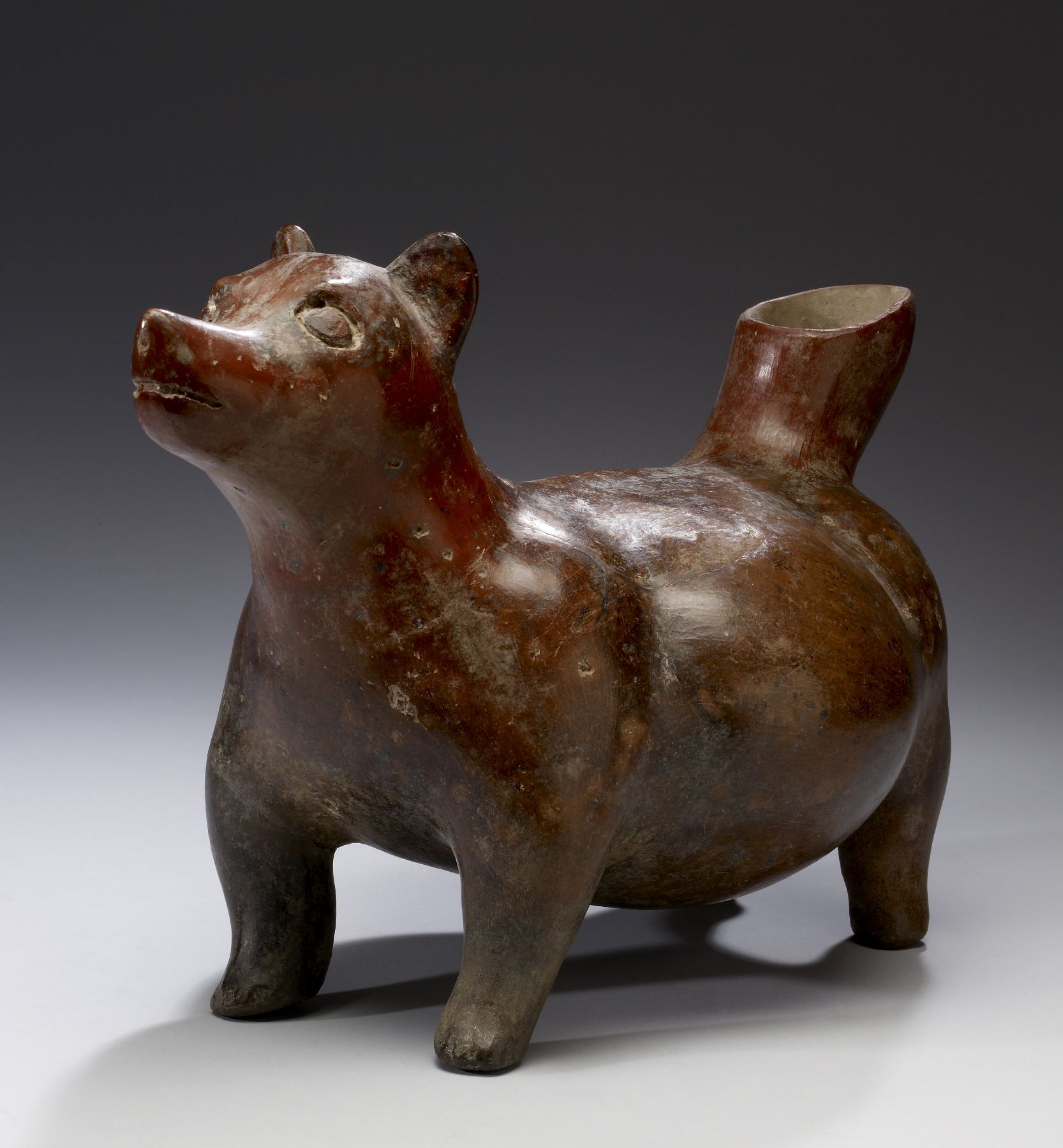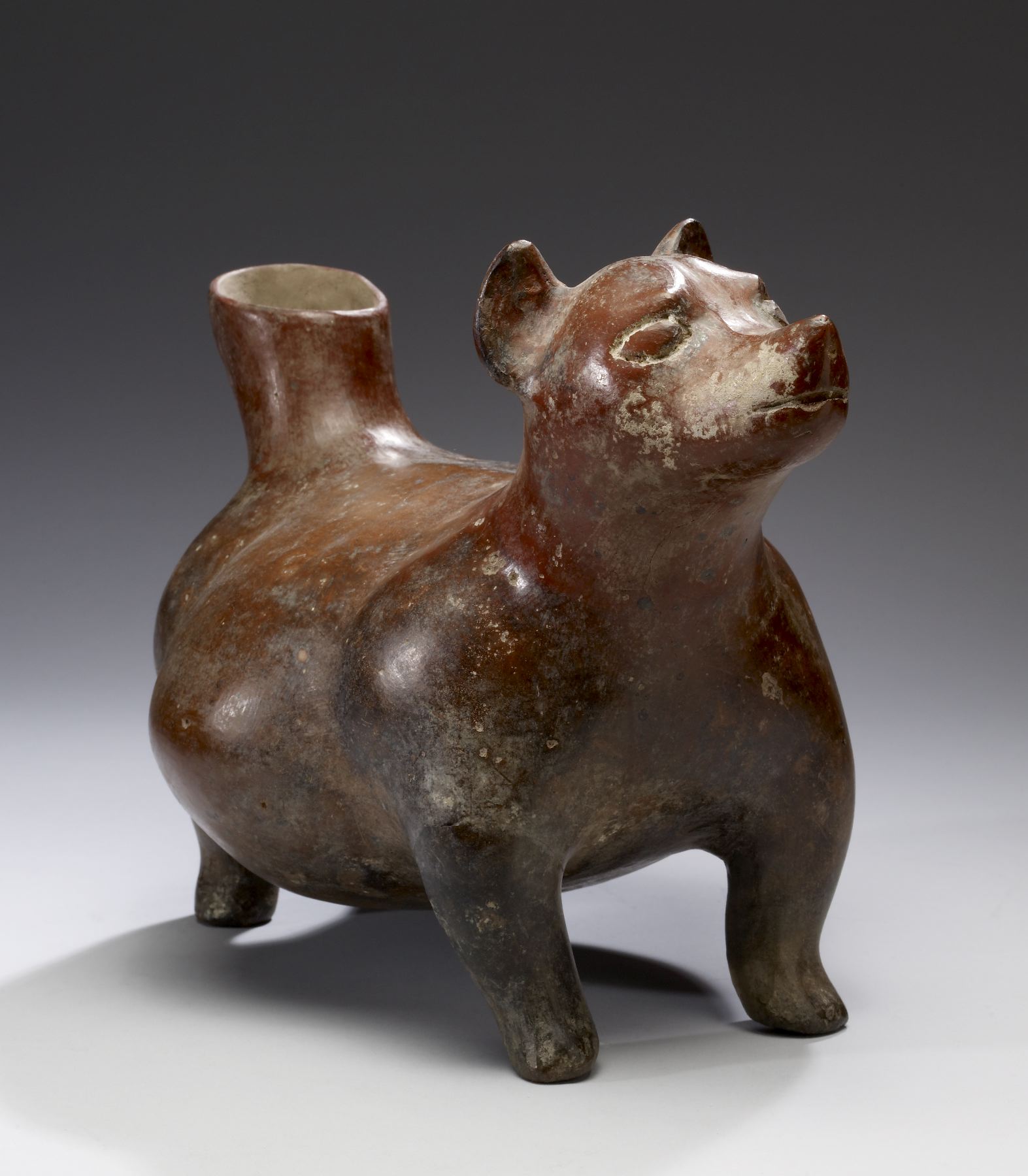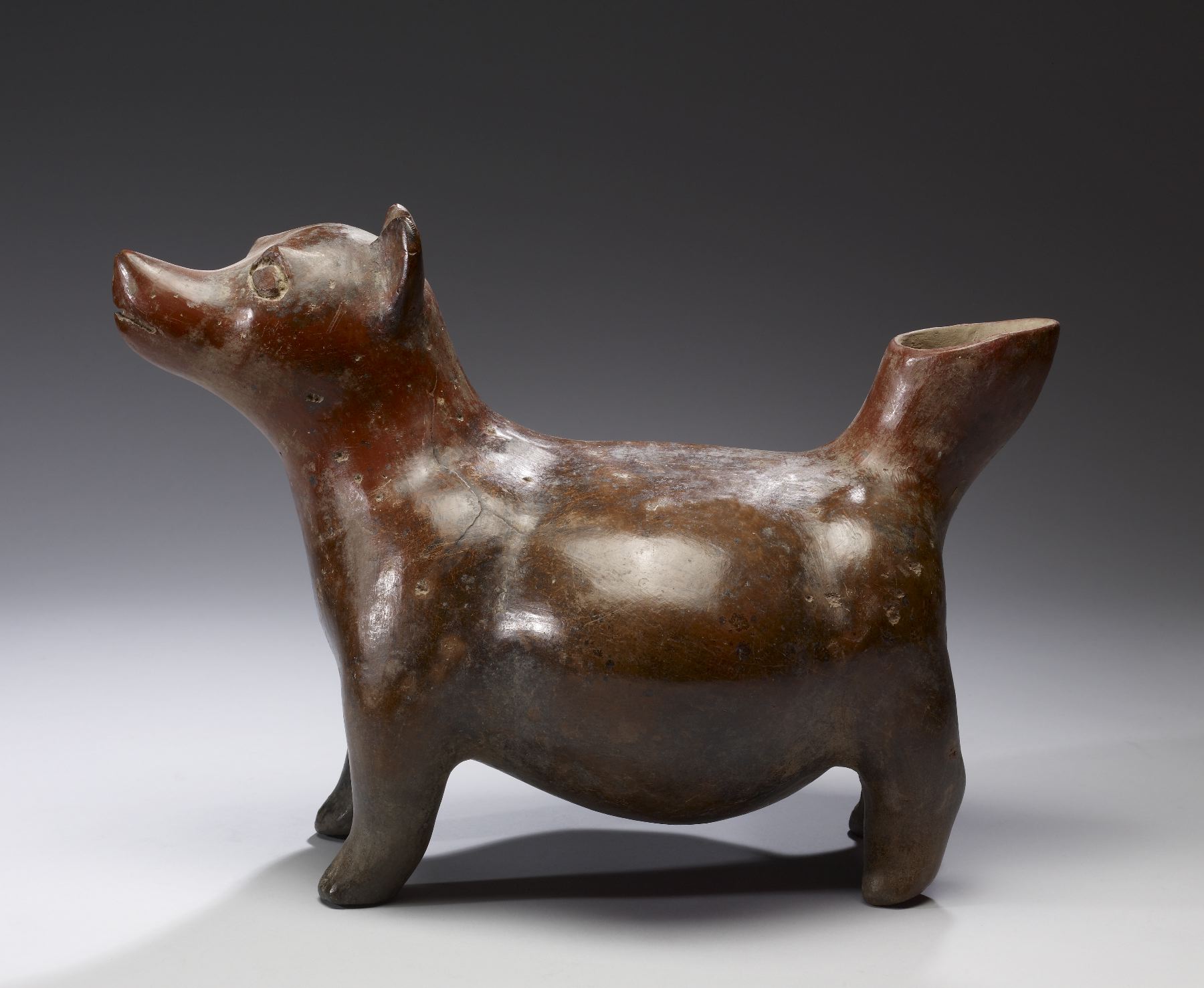Dog Effigy Vessel
(Ancient Americas )
Dogs were indigenous to the ancient Americas, the Mexican Hairless being the likely model for the West Mexico effigies. Throughout Mesoamerica they served as companions, hunting partners, underworld guides, and even sources of food. Ceramic portrayals of dogs are particularly numerous in the shaft tombs of West Mexico, placed among the burials' myriad human pottery figures and dishes of food for the journey after death. Most dogs are depicted as plump and docile. As tomb offerings, these fattened versions may have symbolized food for the deceased's arduous underworld voyage. The dark red canine more realistically illustrates the breed's physical characteristics.
Provenance
Provenance (from the French provenir, 'to come from/forth') is the chronology of the ownership, custody, or location of a historical object. Learn more about provenance at the Walters.
Stendahl Galleries, Los Angeles; purchased by John G. Bourne, Santa Fe, New Mexico, between 1940 and 1949; given to Walters Art Museum, 2013.
Geographies
Mexico, Colima (Place of Origin)
Measurements
H: 9 13/16 x L: 14 5/16 x W: 8 5/8 in. (25 x 36.3 x 21.9 cm)
Credit Line
Gift of John G. Bourne, 2013
Location in Museum
Not on view
Accession Number
In libraries, galleries, museums, and archives, an accession number is a unique identifier assigned to each object in the collection.
In libraries, galleries, museums, and archives, an accession number is a unique identifier assigned to each object in the collection.
2009.20.178






